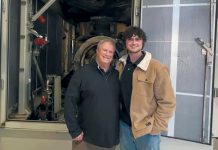I was disappointed after reading an article last week by Mark Rosenberg, titled “Can the U.S. really stop global warming?” I have serious concerns about the way several issues were framed in this piece. However, before I make these points I want to make clear my biases; I do support the Green New Deal resolution because of my firm belief that we need a plan as large scale and serious as it is to address global warming (and the economic consequences that come with it) NOW; but as I will soon show, the Green New Deal resolution is about far more than that.
A flawed but important point that Rosenberg attempts to make is that, “the U.S. will contribute 15% of the world’s carbon-dioxide emissions this year, while China and India combined will contribute 37%.” Unfortunately, this completely disregards the fact that China and India had a combined population of more than 2.7 billion in 2017 according to the World Bank, while the United States’ had just 327.2 million people the same year according to the U.S. Census Bureau. With this in mind take a look at the amount of carbon dioxide each person puts out(Carbon dioxide per capita, in other words) in all three countries; according to the Union of Concerned Scientists, in India each person is responsible for 1.58 metric tons of carbon dioxide annually compared to 6.59 in China, and an astonishing 15.53 in the United States. Furthermore, in Rosenberg’s next sentence, he fails to mention that China’s efforts to decarbonize and build a robust renewable energy sector have completely surpassed us here in the U.S.; “So even if the Green New Deal eliminates U.S. carbon emissions, the impact on global warming will be small unless China and India do the same.”
The entire article is framed around the false dichotomy that in order for our country to reduce or eliminate its greenhouse gas emissions, average people would have to make financial sacrifices. In fact, the only people who will have to make financial sacrifices for the sake of all others, are the super wealthy. The Green New Deal resolution does not simply call “to achieve net-zero greenhouse gas emissions by 2030,” as Rosenberg said. (Which, by the way, is wrong; it actually calls for “global reductions in greenhouse gas emissions from human sources of 40 to 60 percent from 2010 levels by 2030; and net-zero global emissions by 2050;”) It is a plan for a major transformation of our economy. It is a plan to create “millions of good, high-wage jobs,” through investing “in the infrastructure and industry of the United States to sustainably meet the challenges of the 21st century.” To accomplish these goals and more the Green New Deal calls for “a 10-year national mobilization that will require the following goals and projects-.” These “goals and projects” the bill refers to are some of the following: Upgrading and repairing our current infrastructure; expanding and upgrading renewable power sources; “building or upgrading to energy-efficient, distributed, and ‘‘smart’’ power grids, and ensuring affordable access to electricity;” working with ranches and farmers “to remove pollution and greenhouse gas emissions…as much as is technologically feasible;” supporting family farming; ensuring “universal access to healthy food;” “providing resources, training, and high-quality education, including higher education,… so that all people of the United States may be full and equal participants in the Green New Deal mobilization;” the Green New Deal resolution prioritizes all of these goals and much more.
It is pretty obvious the Green New Deal resolution is about more than eliminating greenhouse gas emissions while “forcing Americans to shoulder… the burden.” as Rosenberg implies it is. In reality the Green New Deal is about creating an economy that could never lead to the climate mess we are in today, an economy that could never lead to, as the resolution puts it, “the top 1 percent of earners accruing 91 percent of gains in the first few years of economic recovery after the Great Recession,” it is about building a new economy. We can do our part to curb global warming, and save our country’s economy at the same time.
Jack McCourt
Boulder Creek











